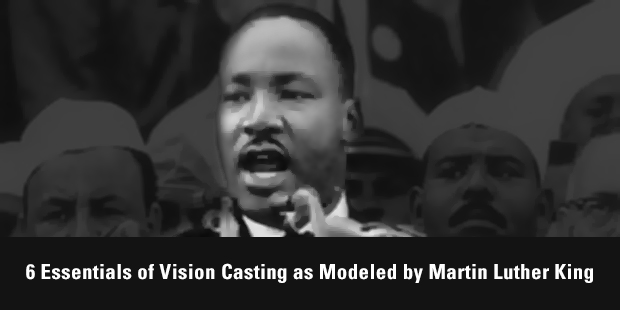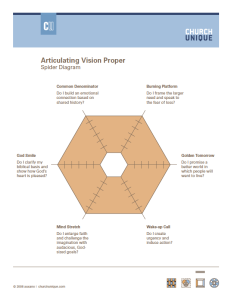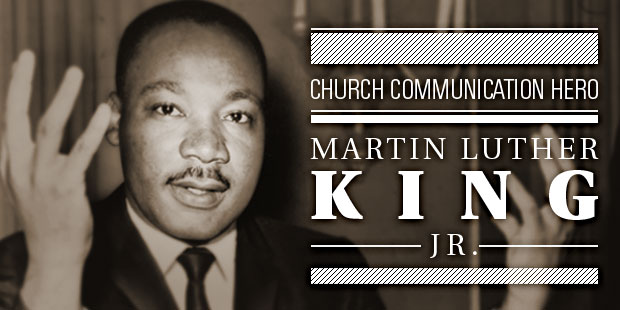
6 Essentials of Vision Casting as Modeled by Martin Luther King
His Dream Became a Reality
Over 50 years ago, Martin Luther King delivered his electrifying “I Have a Dream” speech from the steps of the Lincoln Memorial during the March on Washington, which became a flash point for a movement.
The legend endures beyond memory from a dwindling number of witnesses, but no one alive that day anticipated its sweetly patriotic glow.
– Taylor Branch
King’s speech is rightly remembered as one of the greatest speeches in American history. But few people remember that King stood on those same steps at the Lincoln Memorial 6 years earlier, with many of the same civil rights leaders present, and failed to rally the people.
What was the difference?
Vision.
Departing from his carefully written speech after only a few lines, King paused before continuing on with what are surely four of the most famous words uttered:
I Have a Dream…
Martin Luther King saw himself as a vision caster on that day – a connector not only to how clearly he saw current life but more importantly, how to get to the next immediate future.
As a church leader, you are a vision caster too.
The language of vision casting employs metaphor and story, but your vision has to have a qualitative element as well. There are six essential elements leaders should include for moving people forward in achieving their vision:
> Common Denominator – Do you build an emotional connection based on shared history? Great vision casting moments start by looking back momentarily before looking forward.
> Burning Platform – Do you frame the larger need and speak to the fear of loss? The greatest mistake in vision casting is not recognizing that vision is always a solution to a prior problem.
> Golden Tomorrow – Do you promise a better world in which people will want to live? Stop vision casting to make the church better and show people how the church makes life better.
> Wake-Up Call – Do you create urgency and induce action? The vision casting moment must remind people why action is required today.
> Mind Stretch – Do you enlarge faith and challenge the imagination with audacious, God-sized goals? Without a mind-blowing goal in front of them, your people will never have a reason for risk taking, collaboration, and heroic sacrifice.
> God Smile – Do you clarify your biblical basis and show how God’s heart is pleased? The vision should be dripping with allusions to Scripture and the unquestionable history of God’s work among the local community.
Auxano Founder Will Mancini created a tool to help leaders like you evaluate your vision casting. Called the “Spider Diagram,” it will help you evaluate your vision casting communications on the six points listed above.
 For each essential, the tool has a line to score on a scale of one to five (one being poor, toward the center; five being excellent, near the outer edge). As you measure your vision casting exercise, connecting the scores can plot the vision effectiveness. The ideal is that the vision makes a “wheel” that can roll smoothly.
For each essential, the tool has a line to score on a scale of one to five (one being poor, toward the center; five being excellent, near the outer edge). As you measure your vision casting exercise, connecting the scores can plot the vision effectiveness. The ideal is that the vision makes a “wheel” that can roll smoothly.
In honor of Dr. King’s vision, and as an exercise in evaluating an excellent example of a vision casting speech, use the Spider Diagram tool below while listening to the “I Have a Dream” speech.
Great communicators create movements.

Tags: I have a dream, Jr., Martin Luther King, Spider Diagram, Vision casting
















